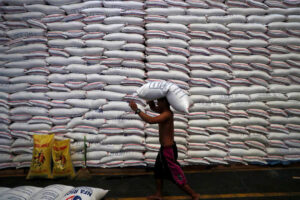FARMERS said savings from the lower tariffs on rice have been pocketed by traders instead of being passed on to consumers.
“The fact that retail prices hardly moved means that importers, wholesalers and retailers pocketed most of the P5 billion in savings. They, and not the consumers, have been the real beneficiaries of the tariff cuts,” Federation of Free Farmers (FFF) National Manager Raul Q. Montemayor said in a statement.
In June, President Ferdinand R. Marcos, Jr. signed Executive Order No. 62 which lowered the tariff on imported rice to 15% from 35% until 2028, citing the need to stabilize rice prices. The order took effect in July.
Rice imports totaled 3.09 million metric tons as of Sept. 19, according to the Bureau of Plant Industry.
According to the FFF, rice traders have absorbed a P6.70 per kilogram saving from the lower tariff, “assuming a landed cost of $600 per MT and an exchange rate of P56 per dollar.”
It estimated total tariff savings from the more than 800,000 MT that arrived between July and mid-September at more than P5 billion.
Mr. Montemayor said that rice price may decline starting late September even without the tariff as the rice harvest season begins.
“Farmers have begun harvesting their main crop. Importers will logically try to sell now, when prices are still high. But instead of forwarding their savings to consumers, they are maximizing their profit margins,” he added.
The Department of Agriculture has said that the lower tariffs on rice will lead to a P5 to P7 per kilogram drop in the price of imported rice.
The impact on prices is expected to start showing up in mid-October, but more significant effects could be seen by January.
“Hopefully, tuloy-tuloy ng pababa ’yan by January. Siguro makuha natin at least less P5 by January (We hope the decrease in rice prices will continue up to January, when prices will fall by about P5 per kilo at least),” Agriculture Secretary Francisco P. Tiu Laurel, Jr. told reporters.
Mr. Laurel added that the rice being consumed at the moment was likely imported during the first half when tariffs were high, though the supply of high-tariff rice is expected to run out by mid-October. — Adrian H. Halili
